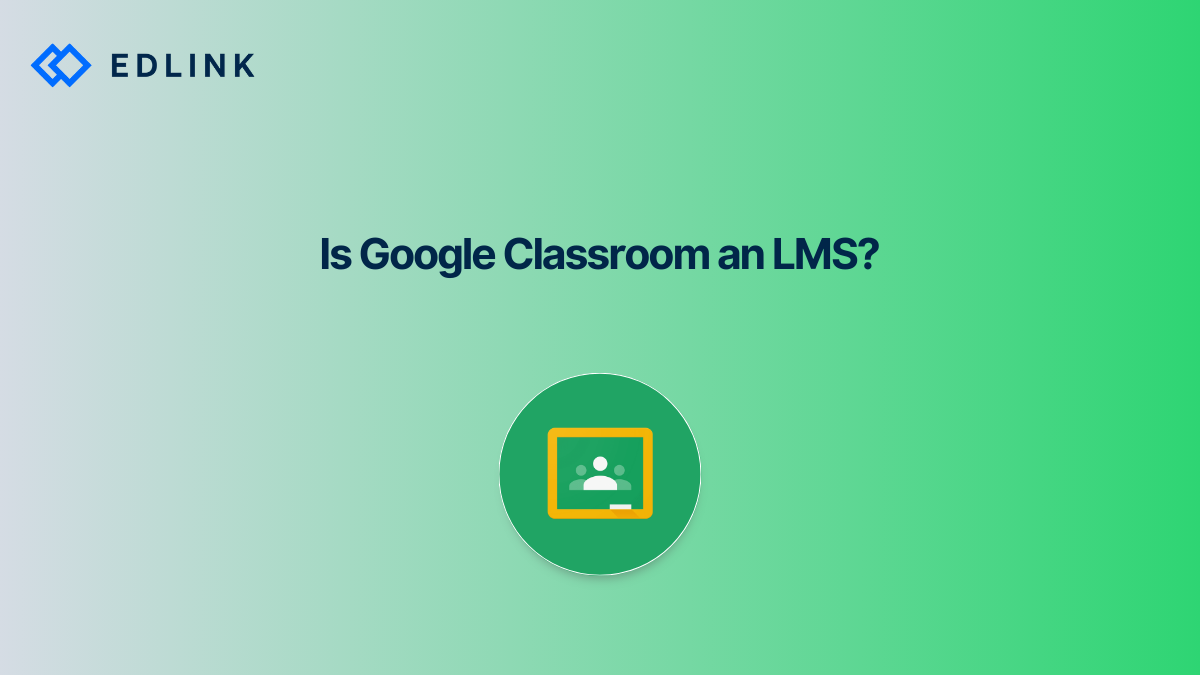A learning management system (LMS) is a valuable tool for educators who need a digital hub for classroom communication, assignments, and grades. Commonly used LMS’s include platforms such as Canvas, Schoology, and Blackboard. When it comes to Google Classroom, however, some in the education space aren’t quite sure what to make of it. Is it an LMS or something else? We compare Google Classroom to other LMS offerings to examine how they're similar and how they differ.
What does a typical LMS have?
LMS's are the cornerstone of classroom's digital ecosystem. Almost all digital assignments, lessons, and resources are delivered through the LMS. LMS platforms also host gradebooks for teachers and report a list of students in their class.
Furthermore, all of the major LMS's support some sort of integration with third-party content. While the level of integration differs between each LMS, there are some commonly supported types of integrations, including the following:
- Single sign-on (SSO): Allows users to sign into an application using their LMS credentials.
- API integration: Allows applications to integrate with an LMS via an application programming interface (API).
- Learning Tools Interoperability® (LTI®) integration: Allows applications to integrate with an LMS via the LTI standard.
- Student Information Systems (SIS) integrations: Allows an LMS to sync roster and other data between an SIS and itself.
These integrations help third-party applications access some of an LMS's data and functionality. For example, API and LTI integrations allow the application to send grades back to the LMS's gradebook. Integrations make the LMS more extensible and gives users a more streamlined experience when accessing online educational content.
So, is Google Classroom an LMS?
Yes, Google Classroom is an LMS. Google Classroom is used by teachers to deliver digital course materials and other online content to their students. Teachers may also use the platform to receive course work submissions and assign grades to students. Additionally, Google Classroom has an API that is used to support integrations with third-party applications. Furthermore, Google is currently developing integrations between Classroom and some of the major SIS's, such as Infinite Campus and Skyward.
However, one major differences between Classroom and LMS's, such as Schoology, Canvas, and Moodle, is its lack of support for the LTI standard. Generally speaking, the LTI standard allows developers to create applications that work across any platform that supports the standard. An LTI application can be used in most of the major LMS's, regardless of which one is used. Since Google Classroom does not support LTI, these applications cannot be integrated into the Classroom LMS. Instead, developers will have to integrate with Classroom using its API.
How does this impact me if I want to integrate with Google Classroom?
Since Google Classroom does not integrate with outside content using LTI, you will have to develop integrations into your own application using the Classroom and G Suite API. This API is public but proprietary, meaning that the integration will only work for Google Classroom and not for any other LMS.
You can get started understanding the Google Classroom API over at developers.google.com/classroom. The documentation covers what data can be retrieved from the LMS and what can be created, updated, or deleted. Furthermore, You will need to go through Google's Cloud Console to request access to certain types of user data, defined under OAuth 2.0 scopes. Depending on the sensitivity of the requested scope, you may need to request access from Google in order to use it in your application. Understanding how to use these scopes properly in conjunction with the API is key to integrating your application with Google Classroom.
How are schools using Google Classroom?
Google Classroom is free to use and signing up only requires the use of a generic Google account. Hence, most Google Classroom users are individual teachers and are not necessarily official district or school-wide deployments (though school administrators that adopt G Suite for Education are also given access to Classroom). This makes Classroom unique among other LMS platforms, since school-wide deployments are more common among those.
Some schools explicitly allow teachers to use Google Classroom as their main LMS, even if the school primarily uses another. Thus, schools who many not officially be using Google Classroom are requesting that publishers make content that can integrate with the LMS. As the number of teachers who use Google Classroom grows, so does the need to make applications and content that integrates with it.
Read More on Google Classroom
Here are other articles we’ve written on Google Classroom ] to help you on your integration journey:
- What Information is Available Through the Google Classroom API?
- How to Whitelist an Application Google
- How to Implement SSO for Google Classroom
- Google Classroom vs. Microsoft Teams: A Side-by-Side Integration Comparison
- How Your App Can Sync Assignments and Grades with Google Classroom
Want to Learn More about Edlink?
If you're looking for a partner who can help guide you through developing LMS integrations (like these), then let’s introduce ourselves. We’re Edlink!

